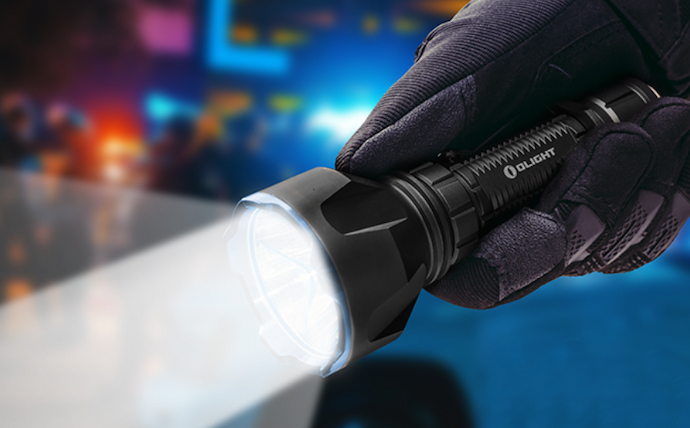Batteries are one of the main components in a solar installation. Their purpose is to store excess power produced from solar panels, so you can use it when there’s little or no sunlight. Rainy and cloudy days are obvious cases, and so is the stored power you use when the sun sets. For residential and portable solar, batteries are of the deep cycle type, meaning they discharge at a much slower rate than say your car battery. This provides adequate power for things like lights, fridges and any devices and appliances that you’d typically use at night. Once the battery is depleted, there are various charging options you can use to top up the charge.
Types of Solar Batteries
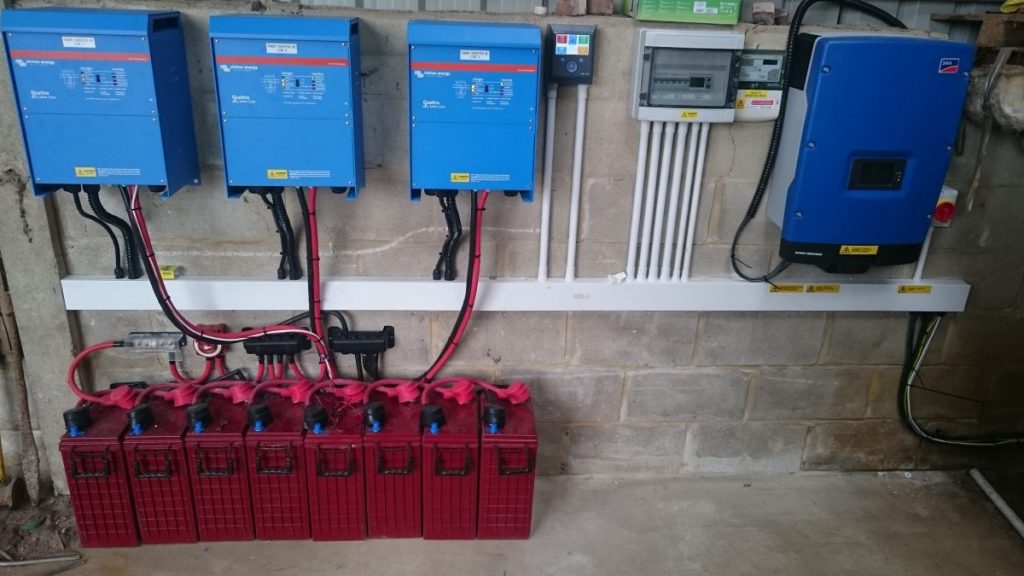
Solar storage batteries use different technologies to provide you with power when you need it. Some are easier and faster to charge, while others provide a constant power supply until fully depleted. Choosing the right type depends on your overall power consumption and the price you’re willing to pay. Let’s take a look at what’s on offer.
Lead-Acid Batteries
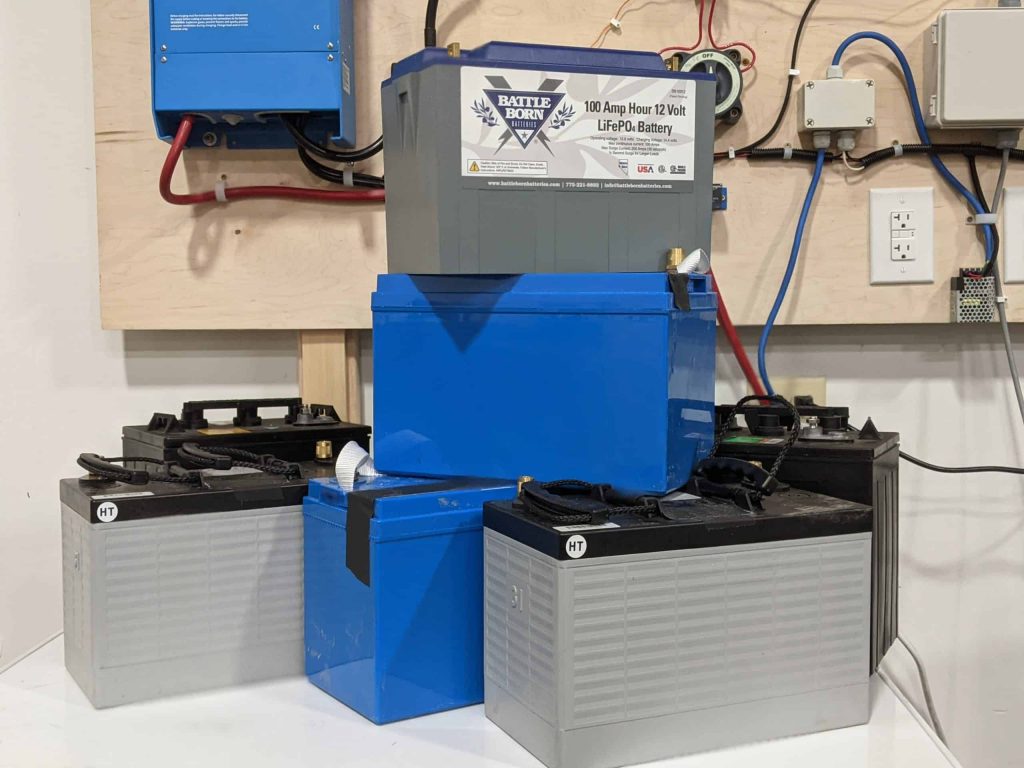
There are a few types of lead-based solar storage batteries:
Flooded Lead Acid batteries, also called FLAs, are some of the oldest types of batteries around and for solar setups some of the cheapest. The battery housing consists of lead plates surrounded or flooded in an electrolyte compound made of sulfuric acid and distilled water. Flooded lead-acid batteries require regular maintenance to produce the best results. This means that water needs to be added every so often, and equalisation, or balancing the voltage of each cell with equal amounts of electrolyte, is done when charging. This leads to the venting of gases, and these batteries need to be stored in well-aired open areas and handled with caution. Typically, they can be discharged up to half of their capacity, any more and you significantly reduce the life cycle of the battery.
Sealed lead-acid batteries come in slightly different designs, so there’s no gas leakage. Two types are commonly used in solar installations. Gel solar storage batteries consist of sulfuric acid and water-electrolyte mix, and the plates are held in place by an immobilised gel or silica compound. Similar are AGM, or absorbent glass mat batteries that use fibreglass mats in between the lead plates to absorb the electrolyte mixture more efficiently. Both types of sealed batteries require less maintenance than flooded lead-acid batteries, and are more efficient during both during charging and discharging. As a consequence, they top up faster, and last longer when powering your devices and appliances. This makes them slightly more expensive than FLAs, but the price here is offset with convenience.
A newer addition are lead carbon batteries with negative plates of lead and carbon composite that reduces the buildup of lead sulphate crystals along the plates, a process known as sulfation. The result is that lead carbon batteries endure less corrosion, and therefore have a longer cycle life. They can be discharged at the recommended rate of 50 per cent in almost 5000 cycles. This makes them the most expensive lead-based battery, but one with high efficiency and is ready for heavy-duty use.
Lithium Batteries
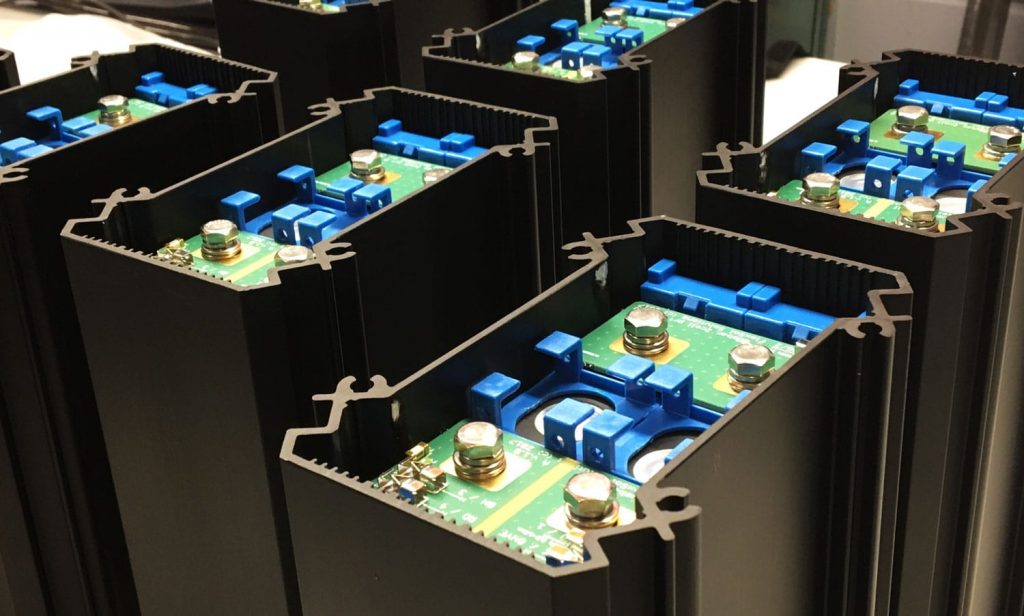
Lithium batteries are those that you charge on a daily basis on your phone, tablet or laptop. They are also the types found in electric vehicles. Lithium batteries are slowly but surely making their way into solar installations, with the prime example being the Tesla Powerwall readily used in residential solar systems. Two different types exist, NMC or Nickel manganese Cobalt and LiFePo or Lithium Iron Phosphate batteries. The latter is the preferred type for solar, as they are much safer. The benefit of Lithium batteries is that they have the best discharge rates, up to 90 per cent without enduring any damage. They also have the longest life cycle of batteries currently used for solar, or around 6000 cycles, meaning they’ll last over 15 years, even when used every day. All this comes at a cost though, and they’re considerably more expensive than lead-based batteries.
Other Battery types
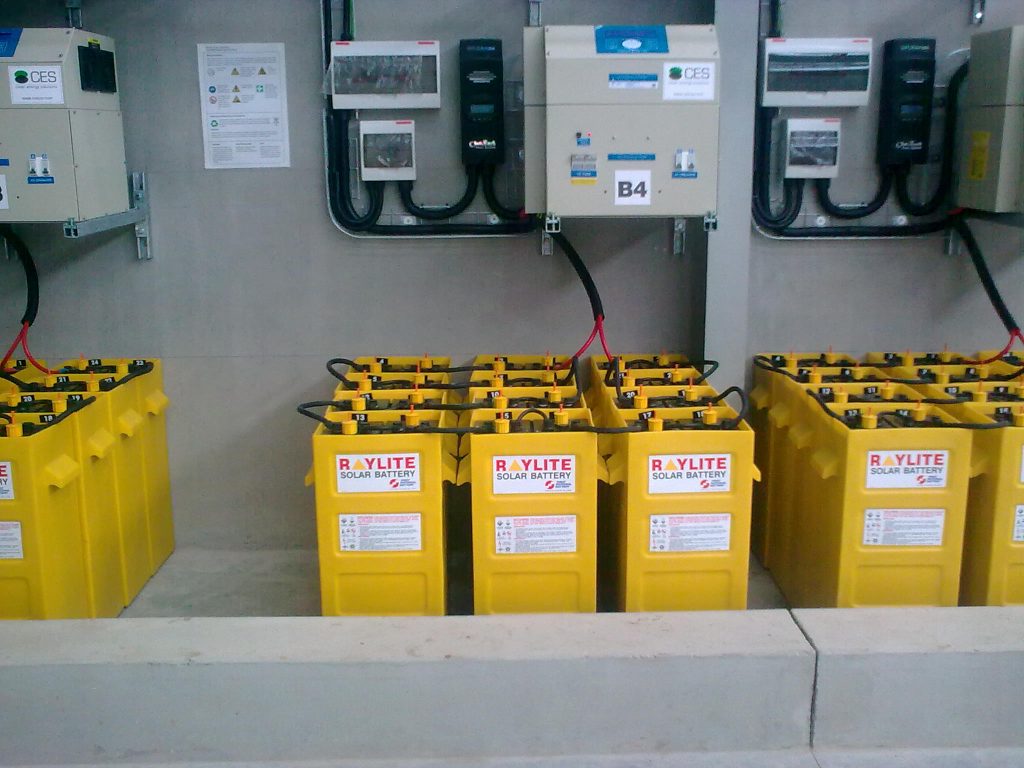
Other batteries used for solar include Flow batteries, in which electrolyte flows through one or more electrochemical cells from one or more tanks. The storage capacity of the battery increases with the electrolyte in the storage tanks. They are very efficient, have low levels of self-discharge and a long life cycle. However, this is a new technology that is in development are few companies produce Flow batteries on a larger scale.
One of the newest battery types is the Sodium-Nickel-Chloride battery, which boasts the safest tech, releasing no toxic substances and have the highest temperature tolerances, meaning they can work in any climate. The downsides are reduced life cycle rates compared to lithium batteries and the extremely high cost.
What to Look for in Solar Batteries?

Depending on how you plan to use the solar storage battery, there are a few things to look for when buying:
- Capacity – This is stated as Amp-hours and visibly printed on the outer casing. The higher the capacity of the battery, the more things you can hook up at the same time. Batteries with a larger capacity will be better suited in larger solar setups running multiple devices and appliances. Of course, this is in a single battery setup. You also connect two or more batteries with the same capacity in a battery bank, and in effect have no power issues. Capacity varies from 30 amp-hours in smaller batteries to 400 amp-hours in the largest lithium batteries. Needless to say, prices rise as amp-hours increase.
- Rated Cycles – this is the number of times a battery can be charged and discharged. Lithium batteries currently have the highest cycle rates, but newer lead carbon batteries are not far behind. Standard AGM and Gel batteries range around 1000 cycles so should last for years with few issues. Newer tech means cycles are increasing, but so are prices
- Compatibility – Pairing your battery with the right charge controller is a must. This is especially true of AGM batteries. Also, consider the size of your solar system, the number of panels, how they are connected, whether in parallel or series, and where the battery can take the charge they provide. Here everything is about proportion. Also, consider the different panel types and the power they put out. Too many panels can literally cook the battery without an installed charge controller. And the opposite, too few panels in lower output, won’t provide enough juice for the battery to charge. Pair your components well, and at the same price point. Your power needs will inform you as to the battery you need.

